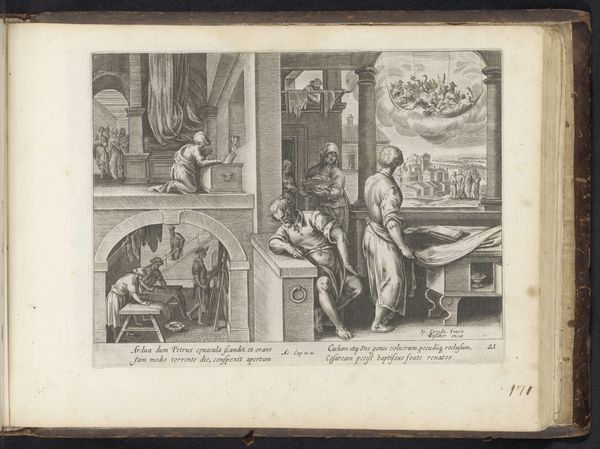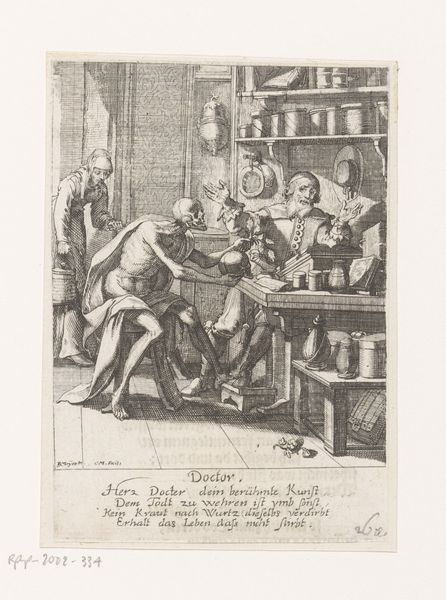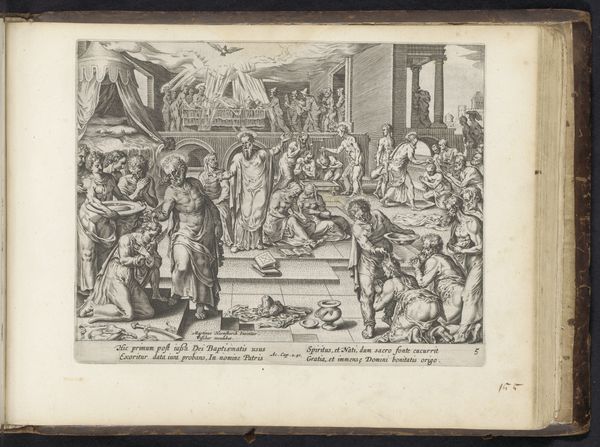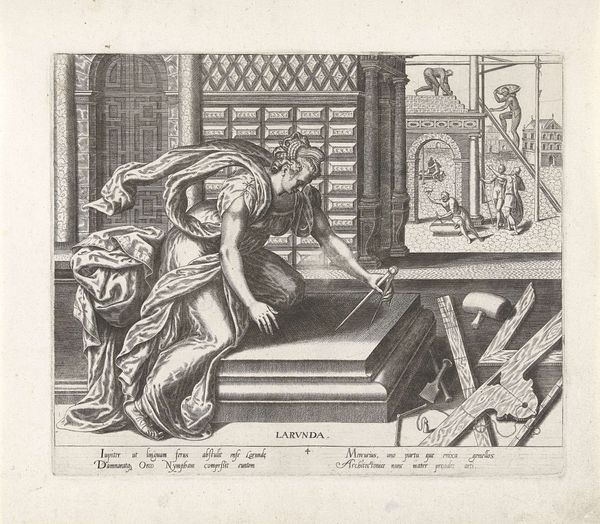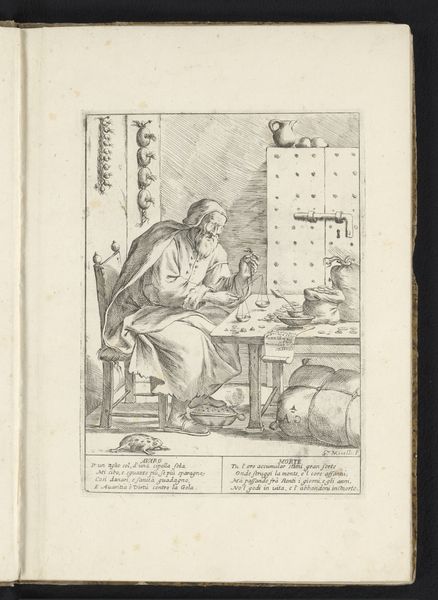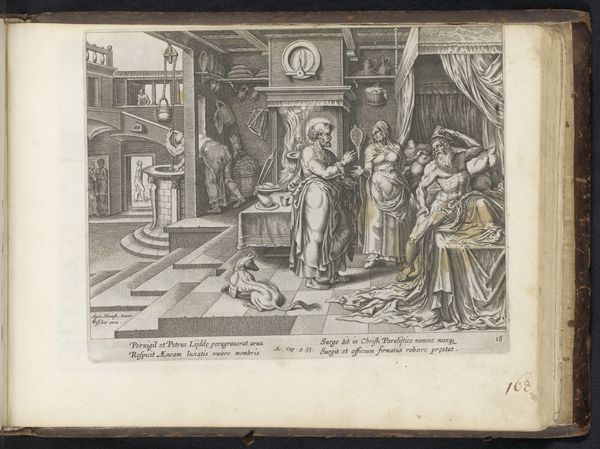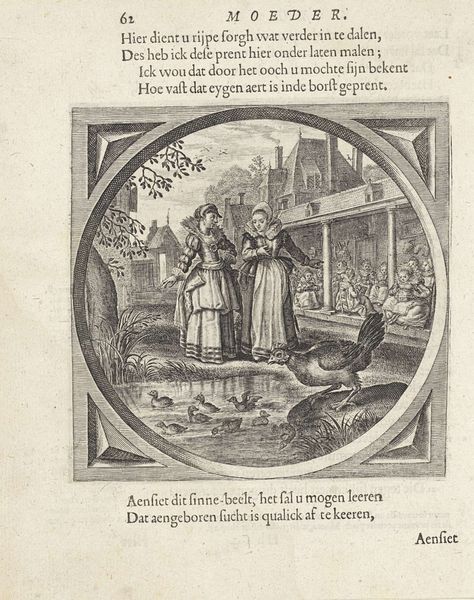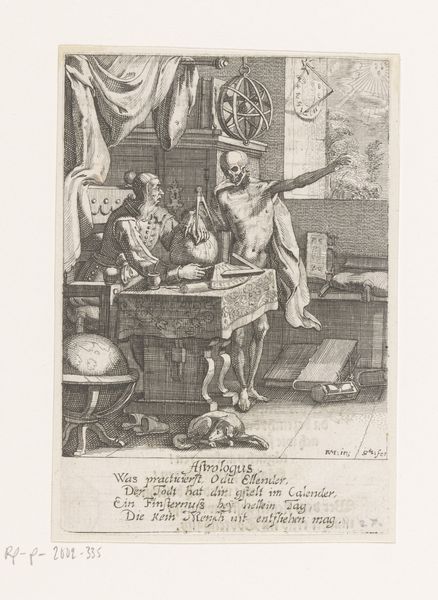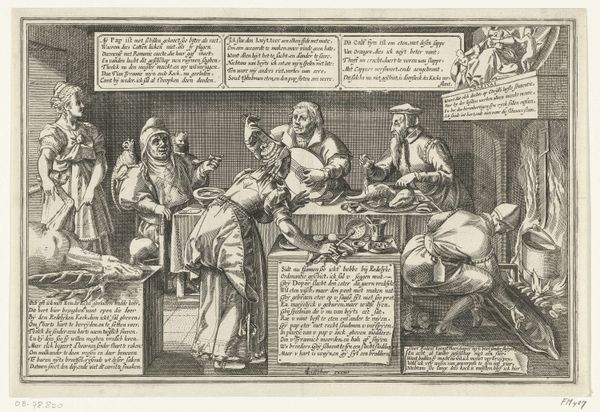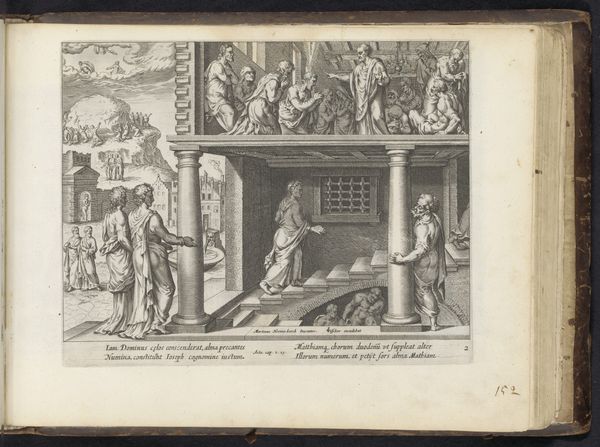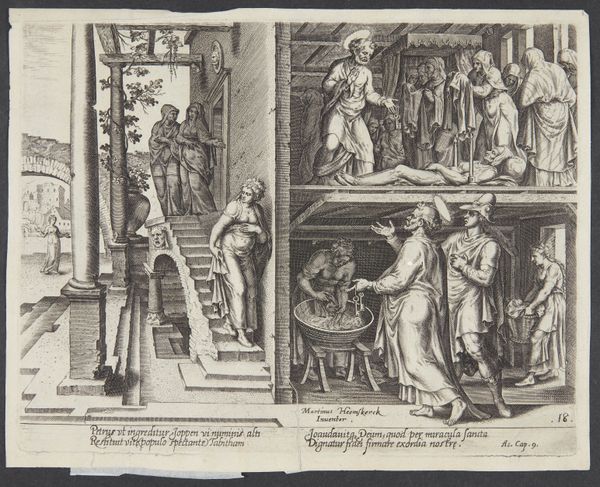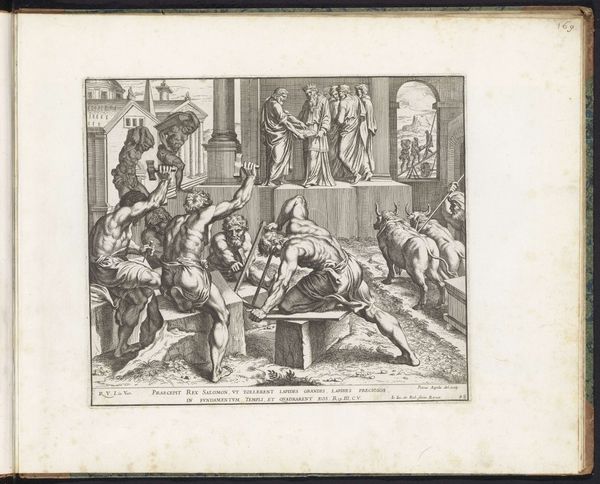
print, engraving
#
baroque
# print
#
old engraving style
#
figuration
#
history-painting
#
engraving
Dimensions: height 181 mm, width 136 mm, height 198 mm, width 309 mm
Copyright: Rijks Museum: Open Domain
Curator: Welcome. Here we have an engraving from 1678, titled "Man verstopt kostbaarheden in haard"—"Man Hiding Valuables in the Fireplace," if my Dutch serves me. It's attributed to Anonymous, and it resides here at the Rijksmuseum. What's your immediate take? Editor: The drama leaps out—this frantic energy of hiding, of potential loss! I sense the weight of a societal threat, maybe war or political unrest—forcing individuals to desperate measures to protect their possessions. The figure himself is worn, his movement pained. Curator: Indeed. The process here is key: the engraver likely worked from a pre-existing design. This replication and distribution meant wider accessibility—the image's content was available beyond a single wealthy patron. It brings up questions about the circulation of such images and how they were produced in quantity. Editor: And the scene itself is staged in an opulent Romanesque setting, isn't it? But what is this wealth? Coins, pottery, what appears to be possibly other figurines, or statues. A cultural wealth this man hides to potentially benefit the upper class, which he clearly isn't. I think we could even unpack its potential colonial dimensions, focusing on potential objects procured from conquest. Curator: A compelling reading. Considering the material process again, we can examine the types of papers available then, the inks, the presses… it tells us something of the networks that made image production possible. The Baroque love for ornamentation and detail is very present in all its material reality. Editor: Absolutely, this detailed ornamentation itself serves a purpose: obscuring that frantic energy of fear through displays of excess, this sort of very tangible "visual wealth" hides underlying themes of social conflict, particularly war. Who profits in such moments of conflict while other men hide treasures? It certainly opens a dialogue about access and economic disparity of the period. Curator: Agreed. In conclusion, the print provides a multi-layered experience for us to explore, and looking through a materialist lens reveals its importance in an ongoing history. Editor: For me, its powerful imagery of hiding exposes questions of wealth, potential war, and societal injustice—allowing me to examine broader intersectional contexts.
Comments
No comments
Be the first to comment and join the conversation on the ultimate creative platform.
